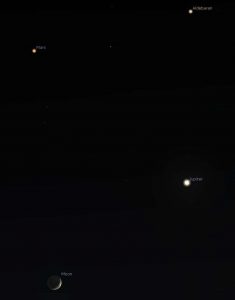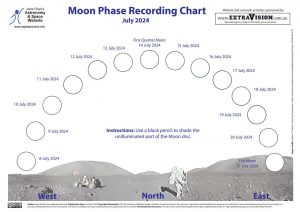Use the finder charts on this page to guide you to where to look for the planets in July 2024.
Don’t have a telescope to look at the planets or Moon? Remember you can contact your local astronomical society about holding a telescope viewing session for your school, youth group or other organisation.
A few pointers:
- All planets visible to the unaided eye look like stars. Planets visible to the unaided eye include Mercury, Venus, Earth (look down!), Mars, Jupiter and Saturn.
- Planet visibility in 2024
- TimeandDate.com will generate customised visiblity information for your location. Just make sure you specify where you are.
- You can download planet rise and set times for different Australian capital cities from Quasar Publishing’s site.
- In a telescope, Uranus and Neptune are visible as tiny discs. The minor planet Pluto remains looking like a star in even the largest amateur telescope.
- Stars are shown to magnitude 5 on the charts unless otherwise noted. This is a compromise between what you would see from the light polluted skies of a city (where you will see significantly less stars) and dark country skies (where you will see significantly more stars).
- Unless otherwise noted, the finder charts are prepared for Wollongong, NSW. The charts will be useful for elsewhere in Eastern Australia including Canberra.
- Planet finder charts usually focus on when the Moon is next to a particular planet. That lets beginning astronomers use the Moon as a ‘signpost’ to find that particular planet.
Mid-July 2024 – International Space Station visible – Morning twilight sky
The International Space Station will be visible in the morning twilight sky across Eastern Australia. Exact times and viewing directions for mid-July will vary for your location. See this separate post for more information.
2 July 2024 – Moon, Mars and Jupiter – Morning pre-dawn sky
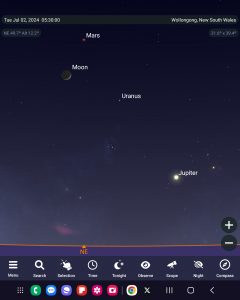
8 July 2024 – Moon and Mercury – Evening twilight sky
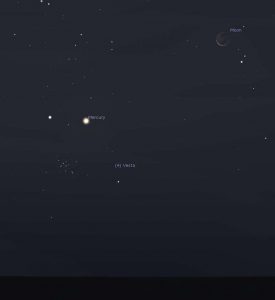
8 to 21 July 2024 – Record the changing appearance of the Moon – Evening twilight sky
An easy but rewarding observing activity is to record the changing appearance of the Moon between New Moon and Full Moon. If you observe it at the same time each evening (end of evening twilight), you will notice that the Moon moves from the West to the East. This movement demonstrates the Moon’s movement in it’s orbit around the Earth. Download the recording chart.
15 July 2024 – Look for Omega Centauri – Evening sky

16 July 2024 – Mars and Uranus close (plus Jupiter) – Morning pre-dawn sky
This morning presents a good opportunity to locate the planet Uranus using only a large pair of binoculars (or better still a small telescope). Uranus will be located only a Moon width away from Mars. Don’t expect a dramatic view of either planet due to their distance from our home planet.
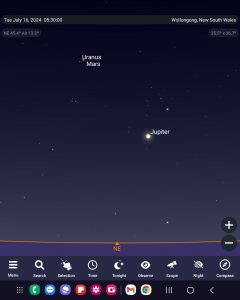
24 July 2024 – Moon and Saturn – Evening sky
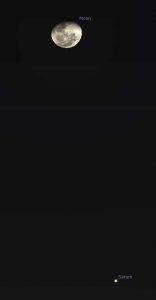
31 July 2024 – Moon, Mars, Jupiter and Aldebaran – Morning twilight sky
